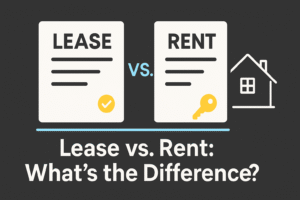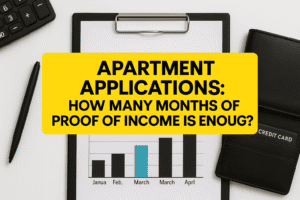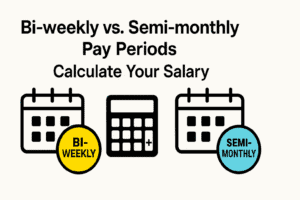Introduction
Last updated: August 2025
By FinancialDocsProvider Editorial Team
AI is changing how people prepare and package financial paperwork. If you are applying to rent an apartment, finance a car, or secure a small business loan, you’ve likely wrestled with messy PDFs, unreadable scans, and inconsistent bank exports. AI financial document services reduce that friction by improving clarity, structure, accessibility, and speed—without changing the facts on your records. Our role is compliance-first: we format, organize, and redact when lawful; we never fabricate numbers, dates, parties, or statements.
In 2025, lenders and underwriters in the US, UK, and Canada expect clean, legible, and complete packets. Applications move faster when documents are standardized and easy to verify. That is where AI-assisted formatting and quality control shine.
Related Entities & Terms
- W‑2, 1099, 1040 (US); T4, Notice of Assessment (NOA) (CA); P60, SA302 (UK)
- IRS (US), CFPB (US), FTC (US); FCA (UK); CRA (CA), FCAC (CA)
- KYC (Know Your Customer), AML (Anti‑Money Laundering), Open Banking/PSD2
- Bank statements, pay stubs/payslips, profit & loss (P&L)
- Optical Character Recognition (OCR), PDF/A, accessibility tags
- Source‑of‑truth records, audit trail, hash/signature checks
- Metadata hygiene, redaction, file normalization
- Income verification, employment verification, account ownership
At FinancialDocsProvider.com, we help applicants and small business owners package complete, consistent files quickly. Need proof of income editing that improves readability without altering facts? Or bank statement formatting that keeps figures intact? You’re in the right place.

Law Basics: Formatting vs. Falsification (US, UK, Canada)
The legal line is clear: improving readability and structure is lawful; altering facts can be fraud. Regulators focus on truthfulness, fair dealing, and identity protection. Across the US, UK, and Canada, lenders expect unaltered factual content, accurate totals, and authentic source documents.
United States
In the US, agencies like the IRS and CFPB emphasize accurate reporting and fair lending. Changing amounts, dates, or payees can constitute fraud or misrepresentation. Redacting account numbers for privacy is generally acceptable when institutions permit it, but the underlying figures must remain unchanged.
United Kingdom
UK lenders follow FCA expectations on fair presentation and anti‑fraud controls. Formatting for legibility is fine; fabricating or omitting material facts is not. If a lender asks for “original format” (for example, a direct bank export), provide it alongside any cleaned versions.
Canada
Canada’s CRA and FCAC stress truthful reporting and consumer protection. Applicants can redact sensitive identifiers when allowed, but numbers and narratives must remain accurate. Provide full account histories if the program requires them.
Across all three markets, keep source‑of‑truth records available. If a reviewer challenges a detail, you must be able to show the original file, native export, or verified bank retrieval.
What Edits Are Allowed
AI excels at tedious tasks that don’t change facts. Here are common, lawful improvements we perform for clients across the US, UK, and Canada.
OCR & Legibility Improvements
- Converting photos or scans into searchable, selectable text
- Fixing skew, rotation, and contrast so totals are legible
- Standardizing fonts and spacing to reduce eye strain
- Correcting garbled headers or month names (not numbers)
Targeted Redaction (When Permitted)
- Masking SSN/NIN/SIN digits while keeping account ownership visible
- Hiding home addresses on payslips or tax forms if the program allows
- Removing QR codes or barcodes that leak personal data
When redacting, we preserve context. For example, we may keep the last four digits of an account number and the bank’s name so the reviewer can match records.
File Normalization & Packaging
- Combining multi‑page statements into one continuous, numbered PDF
- Splitting oversized files by month or category per checklist requirements
- Renaming files with a clear schema (YYYY‑MM_Bank_Last4.pdf)
- Exporting to PDF/A for archival stability and smaller file sizes
Metadata Hygiene
- Removing camera EXIF data from photos of receipts
- Ensuring author/title fields reflect the actual source (e.g., “ABC Bank — Statement Jan 2025”)
- Normalizing timezone stamps so dates align across documents
Accessibility (A11y) Enhancements
- Adding tags for headings and tables for screen readers
- Providing alternative text for charts and bank logos
- Ensuring sufficient contrast ratios for scanned forms
For details on scope and options, see our services page and pricing.
What’s Illegal (and Why)
Any change that misstates facts or conceals material information can be illegal. That includes altering dollar amounts, balances, dates, payees, employer names, tax totals, or transaction narratives. Tools do not change the rule: falsification is still falsification, even if an app or AI model did it.
Potential Consequences
- Application denial and permanent notes on your file with that institution
- Account closures, clawbacks, or acceleration of debts
- Civil liability and, in serious cases, criminal charges for fraud
- Loss of eligibility for specific programs or grants
Lenders increasingly use automated authenticity checks: bank‑connect verifications, hash comparisons, watermark detection, and cross‑document reconciliation. If the numbers do not match what the institution can pull directly, the application will likely be rejected and may be escalated.
Use Cases for AI financial document services
Below are practical situations where compliant AI assistance saves time, reduces errors, and helps reviewers understand your file faster.
Renters & Property Managers
Scenario: Mae is moving to a new city and needs to show 3 months of income. Her pay stubs are split across two payroll systems after a merger, and her bank exports are misaligned.
- We standardize payslips so gross, net, and YTD totals are easy to see.
- We combine bank statements into one PDF, add page numbers, and confirm deposit dates line up with payslips.
- We redact her full address on payslips if the landlord allows, keeping employer details intact.
Result: Mae uploads a clean packet and gets a decision sooner because the property manager does not have to hunt for totals.
Auto Loans & Leasing
Scenario: Ken has variable commission income. His bank statements show large end‑of‑month credits, but the finance office needs predictable documentation.
- We highlight recurring payroll deposits with non‑destructive callouts.
- We link each deposit to the corresponding payslip line item in a cover page.
- We ensure months are in chronological order and totals match.
Result: The finance office can verify income faster and structure the deal appropriately.
Mortgages & Remortgages
Scenario: A couple applies for a mortgage. One partner is salaried; the other is self‑employed with a seasonal business.
- We prepare two tracks: W‑2/SA302 equivalents for the salaried partner; P&L and tax returns for the self‑employed partner.
- We reconcile deposits to invoices without changing any figures.
- We provide an index page with a checklist mapping (e.g., “Lender asks for 24 months — included Jan 2024 through Dec 2025”).
Result: The broker sees exactly what they requested, in order, with no missing months.
Small Business Loans & Grants
Scenario: A startup seeks funding. Their accounting system exports uneven PDFs, and scanned receipts are dark and skewed.
- We normalize exports, fix skew and contrast, and tag tables for accessibility.
- We add a data dictionary so reviewers understand column meanings and date formats.
- We include a non‑editable statement that the figures come from the client’s accounting system as exported on a specific date.
Result: Reviewers can reconcile totals quickly. The packet looks professional and trustworthy.
W‑2 vs. 1099 / T4 vs. Self‑Employed
Salaried applicants usually provide pay stubs and end‑of‑year forms (W‑2 in the US, T4 in Canada, P60 in the UK). Self‑employed applicants typically present tax returns, NOAs/SA302, bank statements, and a P&L. AI helps format, sequence, and cross‑reference these without altering facts.
- W‑2/T4 track: Consistent payslip presentation, readable YTD, clean PDF/A.
- Self‑employed track: Cover page, invoice‑to‑deposit map, monthly P&L, and tax forms in chronological order.
How We Work
Our process is built for clarity, speed, and compliance. We edit for legibility and structure; we do not change facts.
1) Intake & Requirements Capture
- We collect your program or lender checklist and submission portal rules.
- We confirm the permitted scope (e.g., redaction policy, file type, page limits).
- We receive your files through a secure channel and assign a project ID.
2) Reconciliation & Gap Review
- We verify that months are complete and totals progress correctly.
- We check for mismatches between bank deposits and payslips/invoices.
- We flag missing items and provide a short list of what to upload next.
3) Formatting & Accessibility
- OCR for scans; contrast and rotation fixes; table tagging for accessibility.
- Page numbering, file naming, and an index page mapping to requirements.
- Optional cover page clarifying sources and export dates.
4) Delivery & Support
- We deliver a clean PDF packet and, if requested, separate files by month.
- We keep a secure, time‑stamped audit trail of the editing steps applied.
- If your reviewer requests an original export, we help you retrieve and submit it.
Timelines
Many projects finish in 24–72 hours depending on volume and complexity. Rush options are available when checklists are clear and files are legible.
Boundaries We Maintain
- No changes to amounts, balances, dates, employer names, or tax totals—ever.
- No artificial “bank‑connect” screenshots or fake watermarks.
- No logo manipulation to simulate an official export.
Want to understand about our process in more depth? We’re happy to walk you through a sample project.
Compliance Checklist & Document Packaging Tips
Quick Compliance Checklist
- Gather 3–6 months of statements and payslips/paysheets as required.
- Export native PDFs from banks/payroll where possible (avoid screenshots).
- Use consistent date formats (e.g., YYYY‑MM‑DD) across the packet.
- Verify that totals in statements match deposits shown on payslips or invoices.
- Redact only what the program allows; keep context like last‑4 account digits.
- Include a cover page listing sources and export dates; add an index page.
- Deliver in PDF/A where accepted; name files clearly and sequentially.
- Retain originals for audit: keep bank exports, payroll PDFs, and e‑mails.
Packaging Tips That Speed Decisions
- Chronological order with page numbers across the whole packet
- Readable totals (bold or callouts that do not obscure numbers)
- One section per account or income type with a divider page
- Consistent naming:
2025-03_Checking_Last4####.pdf
Mini‑Scenarios
Scenario: Mixed currencies. Applicant is paid in GBP, rents in Canada, and keeps savings in USD.
- We label each account’s currency and add a note that numbers appear in native currency.
- We avoid conversions unless specifically requested by the program.
Scenario: Employer changed payroll systems mid‑year.
- We group payslips by system with a short note on the switchover month.
- We confirm YTD continuity and point out where formats differ.
Red Flags That Trigger Rejections
- Numbers that do not reconcile between bank statements and payslips/invoices
- Missing months or duplicate pages that break continuity
- Inconsistent fonts or spacing within the same “official” page
- Blurry totals, incomplete QR codes, or cropped account headers
- Suspicious edits: mismatched logos, odd metadata, or retyped figures
- Screenshots when a native bank export exists
AI helps flag these issues early. Our tools compare totals across documents and prompt for missing months before you submit.
Resources
Official guidance on truthful documentation and consumer protections:
- CFPB (US Consumer Financial Protection Bureau)
- FCA (UK Financial Conduct Authority)
- CRA (Canada Revenue Agency)
Helpful next steps on our site:
- Explore bank statement formatting and other services
- Review pricing and turnaround options
- Contact our team to discuss your checklist
FAQs
Is it legal to use AI to clean up my financial documents?
Yes—when used for formatting, redaction (when allowed), and accessibility. It is illegal to change facts such as amounts, balances, dates, or payees. We focus on clarity, not fabrication.
How fast can you turn around a typical packet?
Many packets are ready in 24–72 hours depending on volume and legibility. Clear checklists and native exports help us move faster.
How do you protect my data?
We use secure transfer, limited‑scope processing, and audit logs. We delete working copies per policy and retain a minimal history of changes for quality assurance.
Will lenders accept formatted files, or do they require originals?
Most accept clean PDFs. Some may request an original bank export or payroll download. We encourage submitting originals alongside formatted versions when asked.
Do you support US, UK, and Canada requirements?
Yes. We work with common forms and lender checklists across the US, UK, and Canada, including W‑2/1099, P60/SA302, and T4/NOA.
Need accurate, reliable financial documents fast? Contact FinancialDocsProvider.com now.







Add comment